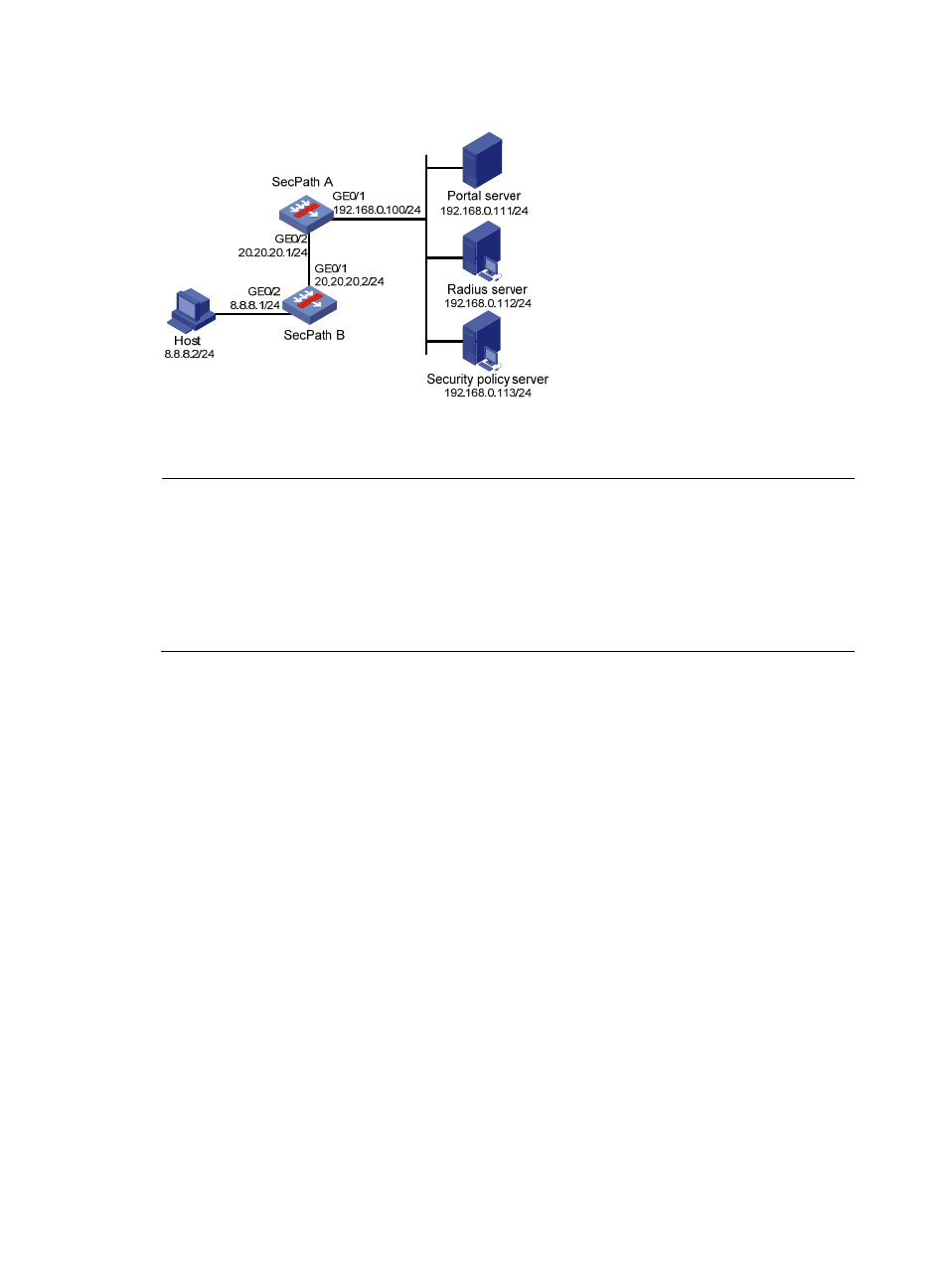Configuration procedure – H3C Technologies H3C SecPath F1000-E User Manual
Page 151

141
Figure 122 Network diagram
Configuration procedure
NOTE:
•
Make sure that the IP address of the portal device added on the portal server is the IP address of the
interface connecting users (20.20.20.1 in this example), and the IP address group associated with the
portal device is the network segment where the users reside (8.8.8.0/24 in this example).
•
Configure IP addresses for the host, SecPaths, and servers as shown in
and make sure that
routes are available between devices.
•
Configure the RADIUS server properly to provide authentication/accounting functions for users.
1.
Configure a RADIUS scheme on SecPath A:
# Create a RADIUS scheme named rs1 and enter its view.
<SecPathA> system-view
[SecPathA] radius scheme rs1
# Set the server type for the RADIUS scheme. When using the CAMS or IMC server, set the server
type to extended.
[SecPathA-radius-rs1] server-type extended
# Specify the primary authentication server and primary accounting server, and configure the keys
for communication with the servers.
[SecPathA-radius-rs1] primary authentication 192.168.0.112
[SecPathA-radius-rs1] primary accounting 192.168.0.112
[SecPathA-radius-rs1] key authentication radius
[SecPathA-radius-rs1] key accounting radius
[SecPathA-radius-rs1] user-name-format without-domain
# Configure the IP address of the security policy server.
[SecPathA-radius-rs1] security-policy-server 192.168.0.113
[SecPathA-radius-rs1] quit
2.
Configure an authentication domain on SecPath A:
# Create an ISP domain named dm1 and enter its view.
[SecPathA] domain dm1
# Configure AAA methods for the ISP domain.
- H3C SecPath F5000-A5 Firewall H3C SecPath F1000-A-EI H3C SecPath F1000-E-SI H3C SecPath F1000-S-AI H3C SecPath F5000-S Firewall H3C SecPath F5000-C Firewall H3C SecPath F100-C-SI H3C SecPath F1000-C-SI H3C SecPath F100-A-SI H3C SecBlade FW Cards H3C SecBlade FW Enhanced Cards H3C SecPath U200-A U200-M U200-S H3C SecPath U200-CA U200-CM U200-CS